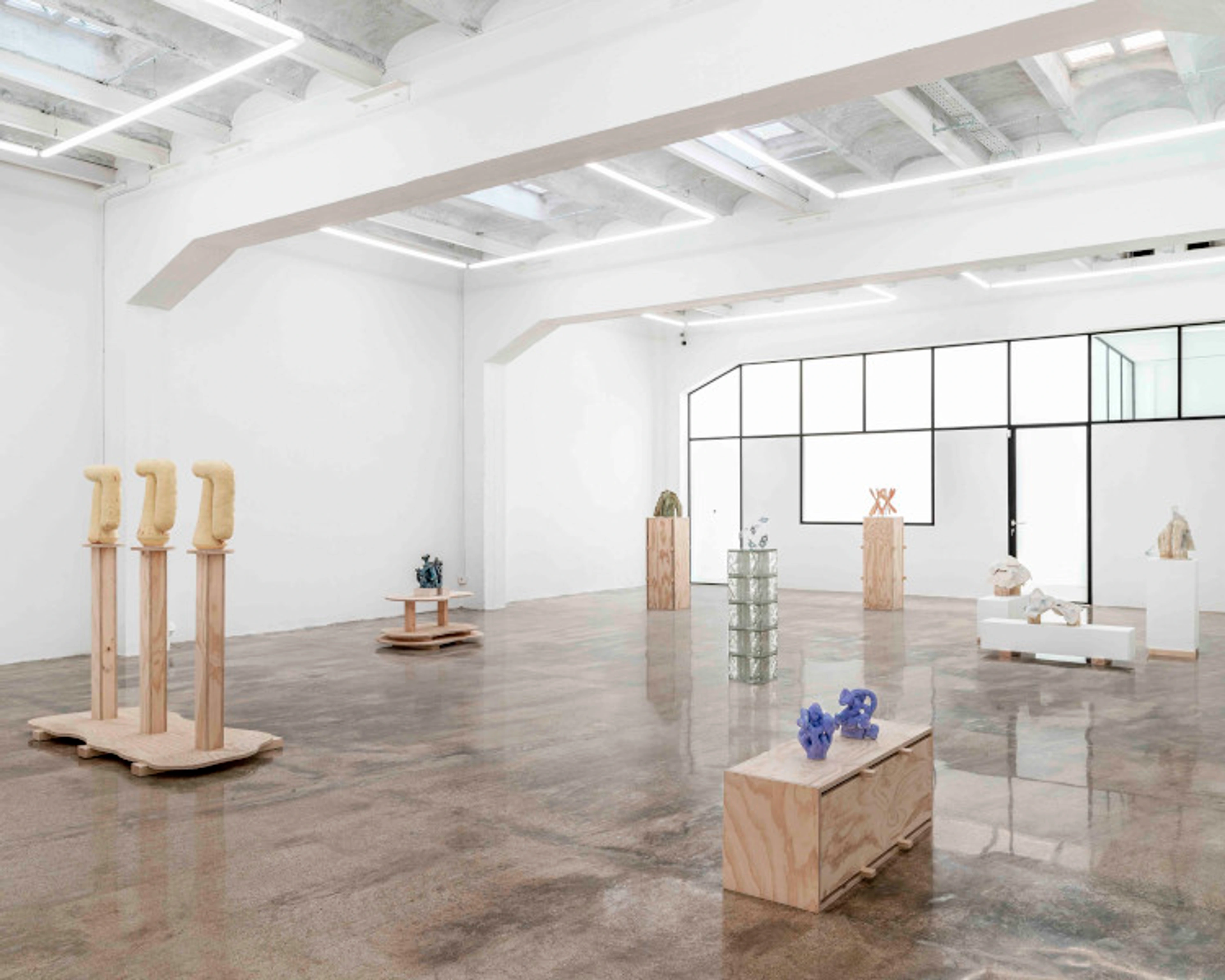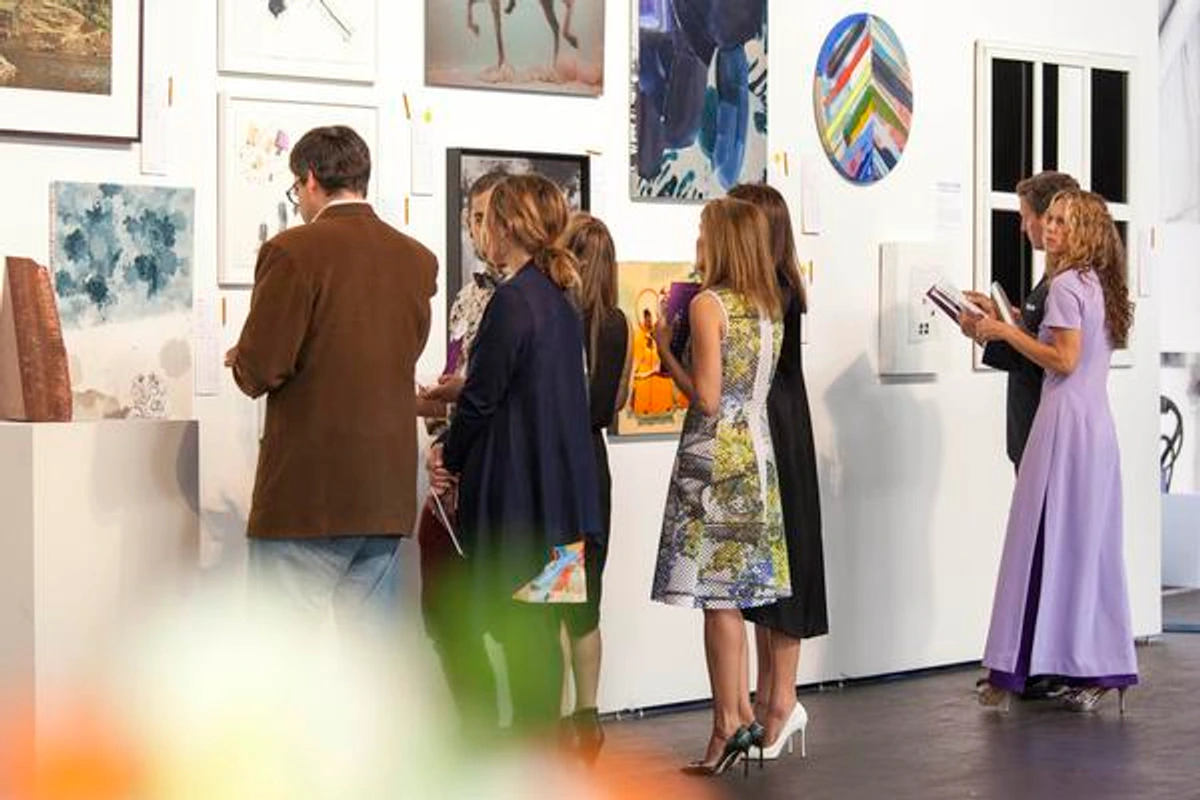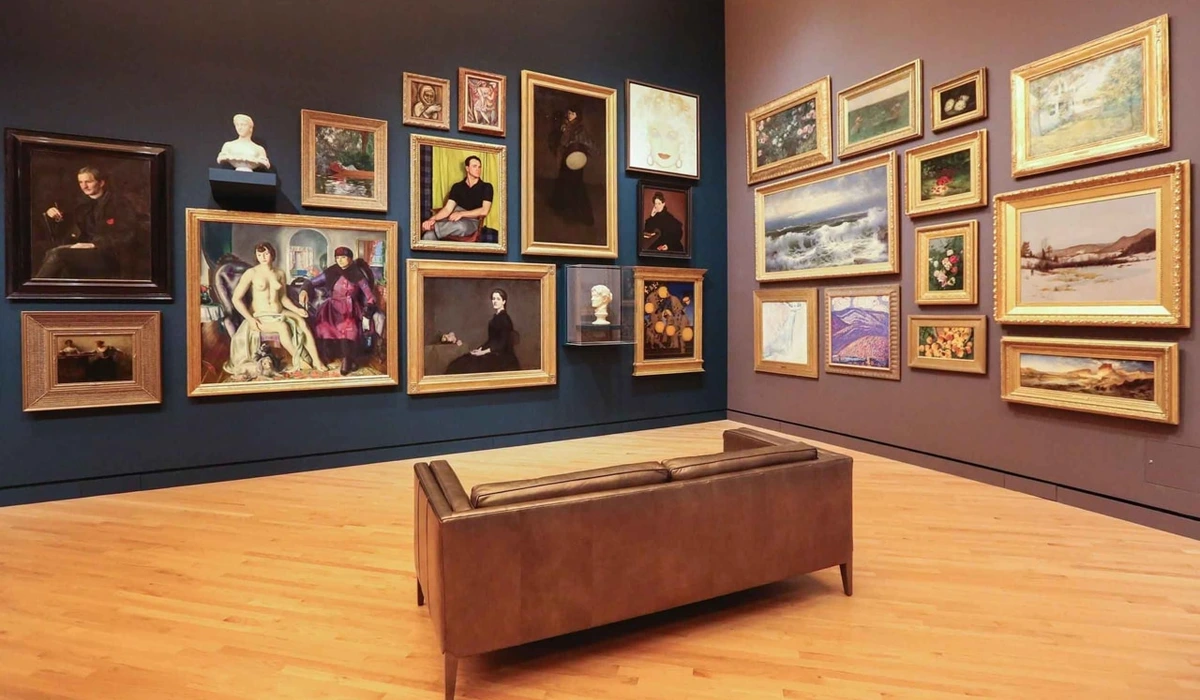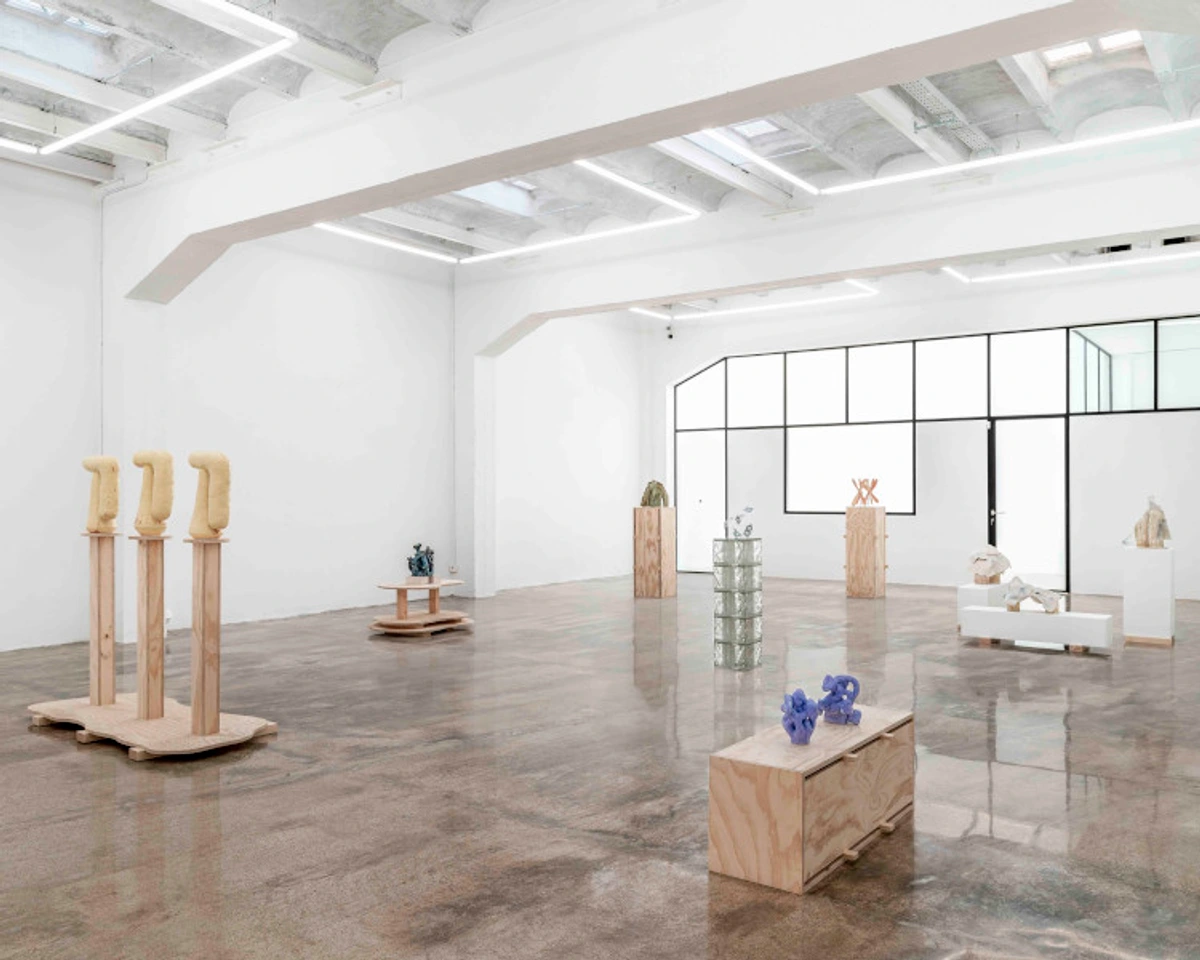
Negotiating Art Payment Plans: Your Guide to Making Art Dreams a Reality
Dreaming of original art but worried about the price? Learn how to negotiate payment plans with artists and galleries, understand the terms, get a contract, and make your art dreams a reality, even on a budget.
Negotiating Payment Plans for Buying Art: Making Your Art Dreams a Reality
Okay, let's talk about something that often feels like the elephant in the room when you fall head over heels for a piece of art: the price. You see it, you feel it, you know it belongs in your life, but then you look at the number, and your heart sinks a little. Been there? Oh, trust me, I have. As an artist, I've been on both sides of this equation – the one creating the work and the one desperately wanting to bring a piece home.
For the longest time, I thought buying original art was strictly a 'save up for years and years' or 'only for the super-rich' kind of deal. And while yes, some pieces command prices that require serious financial planning (or a lottery win), the beautiful truth is, owning art you love is often more accessible than you think. One of the most powerful tools in making that happen? Payment plans.
It might sound intimidating, like you're asking for a favor or admitting you can't afford it outright (which, let's be honest, is often the case!). But approaching galleries or artists about payment options is incredibly common and, frankly, a smart way to build your collection without breaking the bank all at once. It's about finding a way for the art to find its home with you, and for the artist to be fairly compensated for their work.
So, how do you even start this conversation? Where are payment plans usually an option? What should you expect? And what are the potential pitfalls? Let's pull back the curtain and make those art dreams feel a little more real.
Why Payment Plans Are Your Friend (And the Artist's Too)
Think about it from the artist's perspective. We pour our hearts, time, and materials into creating something. Selling a piece is how we keep creating, how we pay the bills, and how we feel seen and valued. While a lump sum payment is always lovely (who doesn't love getting paid?), a payment plan means a committed buyer who truly loves the work and is willing to make it happen over time. It secures the sale, provides predictable income (even if spread out), and gets the art into a loving home where it can be enjoyed. It also helps build a relationship between artist and collector, which is incredibly rewarding for both sides.
For you, the buyer, it transforms a daunting single purchase into manageable installments. It means you don't have to wait years to own that piece that speaks to your soul. It opens up the world of original art beyond just buying art for less or starting an art collection on a budget through prints or smaller works (though those are fantastic too!). It's about acquiring pieces you truly connect with, regardless of whether you have the full amount sitting in your checking account right this second.

Where to Explore Payment Options
Payment plans aren't universally offered, but they are quite common in certain places. It's definitely not rude to ask, but be prepared that the answer might occasionally be no, depending on the venue and the specific artwork.
- Galleries: This is probably the most frequent place you'll encounter formal payment plans. Galleries work closely with artists and collectors and understand that acquiring significant pieces can require flexibility. They often have established policies, though terms can sometimes be negotiated. Larger, high-end galleries dealing with very expensive works or auction houses are less likely to offer them, typically requiring full payment quickly.
- Directly from Artists: Many independent artists, especially those selling from their studios or online, are open to payment plans. It's a direct relationship, and they often appreciate the opportunity to connect with a collector who genuinely loves their work. Don't be shy about asking! Building a relationship here can be key.
- Online Platforms: Some online art marketplaces or galleries offer built-in payment plan options, sometimes through third-party services. This can make the process very straightforward, though less personal than direct negotiation. Platforms like Artsy or Saatchi Art sometimes integrate these, or artists selling directly on their own sites (like my art for sale) might offer them. Always check the specific platform or artist's policy.
- Art Fairs: While the pace is fast, don't hesitate to ask gallery representatives or artists at art fairs if they offer payment plans. Visiting art fairs is a great way to see a lot of art, and sometimes deals can be struck on the spot.
Places where payment plans are less likely? As mentioned, major auction houses or large retail art sites focused on mass-produced items. It's always worth a polite inquiry, but manage your expectations.
How to Approach the Conversation: Negotiating with Grace
Okay, deep breath. Asking about a payment plan isn't like asking for a handout. It's a business transaction, albeit one wrapped in the beautiful world of art. It's about finding a mutually agreeable path to ownership. Here's how I'd recommend approaching it:
- Do Your Homework (and Show It): Before you even mention payment, show genuine interest in the piece and the artist. Ask questions about the work, the artist's process, their inspiration. This demonstrates you're not just looking for a deal, but you truly appreciate the art. Knowing a bit about understanding art prices and researching artists can give you confidence and show you're a serious collector.

- Express Your Love for the Piece: Be sincere! Tell them why this particular piece resonates with you. Artists and gallerists love hearing this. It builds rapport and makes them more inclined to help you make it work. I remember one collector who told me my painting reminded them of a specific, cherished memory from their childhood – that connection meant the world to me.
- Politely Inquire About Options: Once you've established interest and rapport, you can say something like, "I absolutely love this piece, and I'm very interested in making it part of my collection. Would you happen to offer payment plan options?" Keep it simple and direct.
- Be Prepared to Discuss Terms: If they say yes (hooray!), they'll likely outline their standard terms. This is where you listen carefully. They might ask what kind of plan you had in mind. Be ready to propose something reasonable based on the artwork's price and your financial situation. Common terms include:
- Down Payment: Often 20-50% of the total price.
- Duration: Typically 3 to 12 months, sometimes longer for very expensive pieces.
- Frequency: Usually monthly payments.
- Negotiate (Gently): While galleries often have set terms, there might be slight flexibility, especially with independent artists. If their standard plan doesn't quite work, you could politely ask if they'd consider a slightly different duration or payment schedule. For example, "Would it be possible to spread the payments over 8 months instead of 6?" Always be respectful and understand they have their own financial needs.
- Get it in Writing: This is crucial! A verbal agreement is nice, but a written contract protects both you and the seller. It doesn't need to be overly complicated, but it should clearly state:
- The specific artwork being purchased (title, artist, medium, size, price).
- The total purchase price.
- The down payment amount and date received.
- The schedule of remaining payments (amount and due date for each).
- What happens if a payment is missed (e.g., late fees, cancellation policy).
- When ownership of the artwork transfers to you (usually upon final payment).
- When and how you will receive the artwork (e.g., shipped after final payment, picked up).
- Return policy, if any (though typically limited for payment plans).

What to Include in a Payment Plan Agreement (The Nitty-Gritty)
Okay, let's dive a little deeper into that contract. Think of it as a roadmap that prevents misunderstandings down the line. Here are the absolute must-haves:
- Identification of the Artwork: Title, artist name, medium (oil on canvas, bronze sculpture, limited edition print, etc.), dimensions, and ideally a small photo.
- Total Purchase Price: The agreed-upon price before any payments are made.
- Payment Schedule: This is the core. List each payment amount and its exact due date. Be realistic about what you can afford.
- Down Payment: Clearly state the amount paid upfront and the date it was received.
- Late Payment Policy: What happens if a payment is late? Is there a grace period? A fee? This protects the seller.
- Default Clause: What happens if you stop making payments altogether? The contract should outline the consequences. This might involve the seller keeping the payments made so far and retaining the artwork, or other arrangements. This protects the seller from losing both the art and the income.
- Ownership Transfer: When does the art legally become yours? Almost always, this is after the final payment is successfully made. Until then, the seller retains ownership.
- Artwork Custody and Delivery: Who holds the art during the payment period? Usually the seller. When and how will it be delivered or picked up after the final payment? Who pays for shipping/insurance during transit? Clarify this.
- Condition of Artwork: Note the current condition of the piece at the time of agreement.
- Signatures and Dates: Both buyer and seller should sign and date the agreement.
Having these points clearly documented protects both parties and ensures everyone is on the same page. It might feel formal, but it's a sign of a professional transaction.
Potential Pitfalls and How to Avoid Them
While payment plans are fantastic, they aren't without potential issues if not handled correctly. The biggest pitfall is a lack of clarity or a breakdown in communication.
- Missing Payments: Life happens, I get it. But if you anticipate being late or miss a payment, communicate immediately with the gallery or artist. A good relationship and open communication can often lead to finding a solution, whereas silence can trigger the default clause in the contract.
- No Written Agreement: This is a huge risk for both sides. Without a contract, proving the agreed terms, payment history, or ownership can be incredibly difficult if a dispute arises. Always, always get it in writing.
- Not Understanding the Terms: Don't sign anything you don't fully understand. Ask questions about the payment schedule, late fees, and especially the default clause and ownership transfer. It's okay to ask for clarification.
- Assuming Delivery Before Final Payment: Unless explicitly stated otherwise in the contract, assume you won't receive the artwork until the final payment clears. This is standard practice to protect the seller.
- Not Budgeting Properly: Only commit to a payment plan you are confident you can fulfill. Look at your finances realistically before agreeing to terms.
What NOT to Do When Asking About a Payment Plan
Just as important as knowing what to do is knowing what not to do. Avoid these common missteps:
- Don't Lead with the Question: Don't walk in and immediately ask, "Do you do payment plans?" without showing genuine interest in the art first. Build rapport, express your admiration for the piece.
- Don't Lowball the Price First: Trying to negotiate a lower price and ask for a payment plan simultaneously can be off-putting. Focus on the payment plan as a way to manage the stated price, unless price negotiation is explicitly part of the gallery's or artist's process (which is a separate conversation, perhaps covered in negotiating art prices in galleries).
- Don't Act Entitled: No one is obligated to offer you a payment plan. Approach it as a request for a flexible option, not a demand.
- Don't Be Vague About Your Proposal: If they ask what kind of plan you need, have a realistic idea ready (e.g., "I could do 25% down and pay the rest over 6 months").
- Don't Disappear: If you inquire and then decide not to proceed, let them know. It's polite and maintains a good relationship for the future.
Alternatives to Traditional Payment Plans
While direct payment plans are common, especially with artists and smaller galleries, there are other ways to make art ownership more accessible:
- Layaway: Similar to a payment plan, but often the item is held by the seller until the final payment is made. Terms can vary.
- Art Rental Services: Some galleries or companies offer art rental, where you pay a monthly fee to have art in your home or office. Sometimes, a portion of the rental fee can be applied towards the purchase price if you decide to buy. This is a great way to live with a piece before committing.
- Third-Party Art Financing: A few companies specialize in financing art purchases, essentially acting as a lender. This is more like a traditional loan and involves credit checks and interest, but it can be an option for higher-value pieces or if the seller doesn't offer plans directly.

Making Your Art Dreams a Reality
Buying original art is a deeply personal and rewarding experience. It connects you directly to the artist's vision and brings unique energy into your space. Don't let the upfront price tag be an insurmountable barrier. Payment plans are a widely accepted and practical way to acquire pieces you truly love, allowing you to build a meaningful collection over time.
By approaching the conversation respectfully, understanding the terms, and ensuring you have a clear written agreement, you can navigate the process with confidence. So go ahead, find that piece that speaks to you, and don't be afraid to ask how you can make it yours. Your art dreams are closer than you think.
Perhaps that perfect piece is waiting for you in my collection, or maybe you'll discover it on a visit to my museum in 's-Hertogenbosch. Every piece has a story, just like my own journey as an artist.




